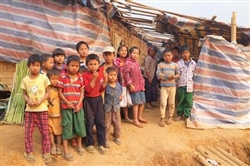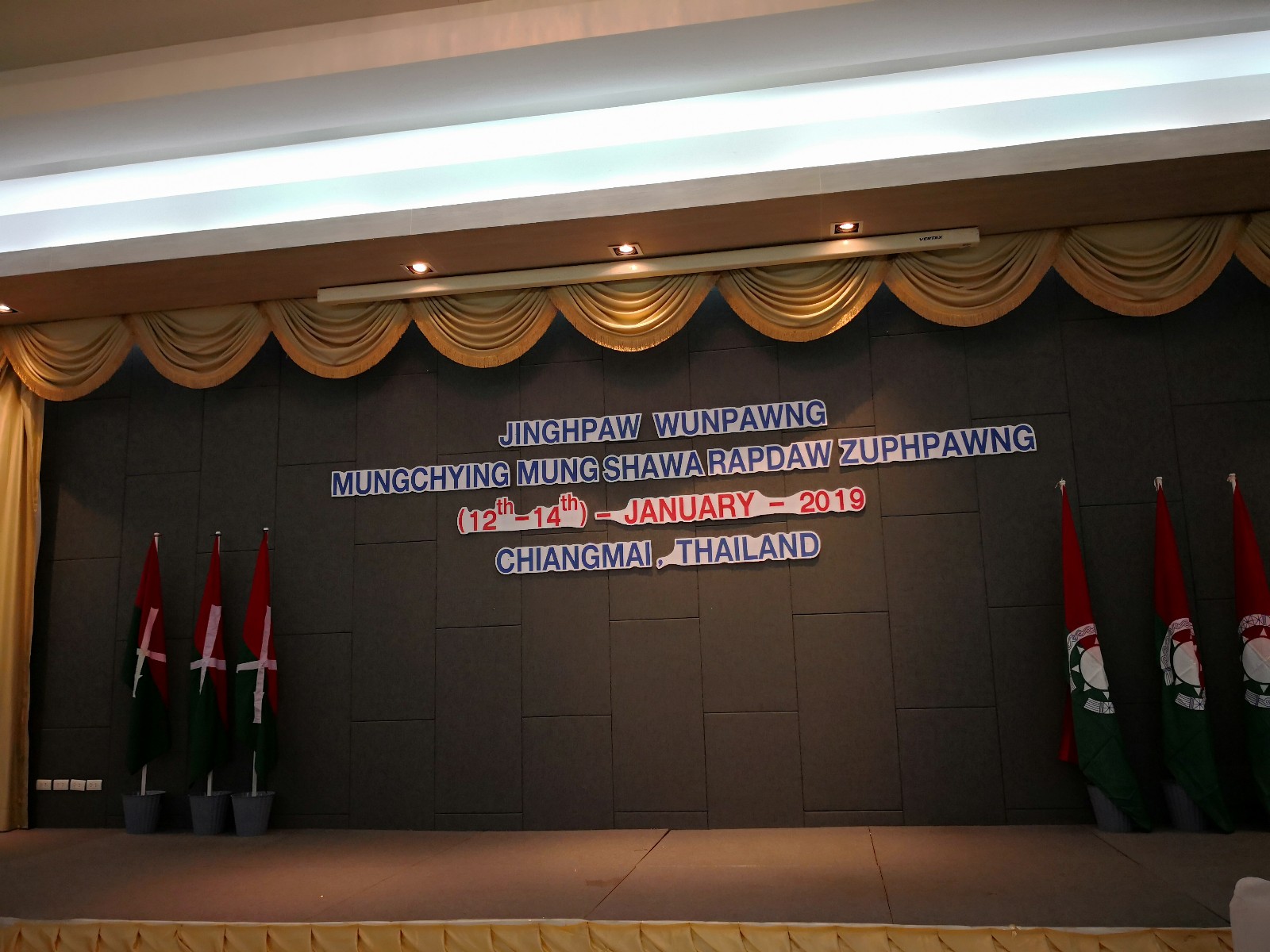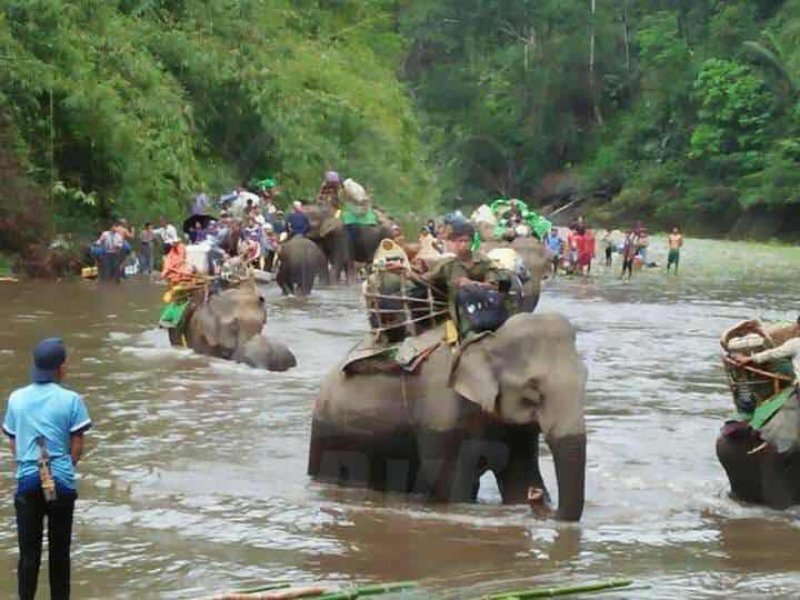A new round of cease-fire talk between the military-based government and ethnic resistance groups is scheduled to hold on March 16th in Rangoon against the backdrops of ongoing escalated fighting in Northern Shan State and Kachin Sate. The KIO which has reduced its involvement in Nationwide Cease-fire Coordination Team (NCCT) since the artillery attack by the government military on its training school that killed 23 cadets on November 19th, 2014, is reported to observe the cease-fire meeting.
Such meeting that finds ways to find solution to the problem is necessary in the land of “conflict trap.” However, one cannot help but to be cynical of the outcomes of such meeting that has repeatedly produced no substantial progress but failed promises over and over again. In definition, insanity means “doing the same thing over and over again and expecting different results.” The so-called peace process in Burma is not unlike a revolving door where one comes out of the same door from which he or she entered. It is hoped that this upcoming meeting can bring some sane results for the sake of war-torn regions and people.
The repeated failures of talks between the government and ethnic resistance groups in the past necessitate an honest look at the problem of the solution itself. Albert Einstein once rightly commented that “no problem can be solved from the same level of consciousness that created it.” In other words, we cannot solve the problem with the same thinking we use when we created them.
In doing so, the prognosis of the current state of strife in Burma, its discursive practice and political reactions to it must be revisited. The pundits often portray and discuss current state of contention in Burma as “ethnic conflict.” Martin Smith’s State of Strife: the Dynamics of Ethnic Conflict in Burma is a good example of such use of language that inadvertently highlights intra-conflicts among the small ethnic groups in Burma. It must be stated, however, that what I find problematic is not the right argument made in the book, but the right use of word. The term “ethnic conflict” to describe the situation in Burma is misleading, and often renders disservice to the process of finding solution to the problem.
The term “ethnic conflict” generally indicates contention between or among ethnic groups that assume equal or competitive power relations. The conflict in Burma, however, is fundamentally between the Bama (ethnic majority) – dominated, military-based government and the rest of the ethnic groups. The ethnic minorities in Burma coexist peacefully most of the time and some ethnic-based conflicts are minimal in number and often instigated by the military government when it occurred. Thus, to define Burma as saturated with “ethnic conflict” misses the crucial phenomenon that is minority (ethnic) resistance to the majority (Bama) domination, signifying stark difference in power position.
It must be noted, however, that racially-bent, deep-seated animosity against the dominant Bama ethnic group which comprises of over 60 percent of the population is growing in Burma due to military-based government’s racial projects. Racial projects, according to Omi and Winant (2014), are efforts to organize and redistribute resources along particular racial/ethnic lines. Militarization project that solely centers around dominant Bama ethnic group is a salient example of a racial project doing the work of representing ethnic/race and linking it to the social structure, and shaping who has access to which rights and resources in society.
The term “ethnic conflict” underscores power dynamic of the parties involved as contentious and competitive oppositions. Such usage of the term “ethnic conflict” often provides far-reaching impact on analyzing and bringing solution to the problem in current political context in Burma. With no regards to the unequal power relationship between the reigning Bama-dominated, military-base government and Kachin resistance group, Yun Sun, fellow of the Stimson Center and the Brookings Institution, unfairly labeled the Kachin leadership as “local players” who are capable of manipulating and playing even superpowers such as United States and China. The experts should not loose sight of the fact that the critical issues of “ethnic conflict” in Burma are not so much of disagreement or misunderstanding between the two opposing parties, but a domination and exploitation of the powerful over the powerless.
Analyzing through the term “ethnic conflict” also renders a technical conflict-resolution strategy as a priority in current peace process rather than underlining issues such as rights and equality. Thus, a planned talk becomes a tactical solution to forge agreement between conflicting parties. However, a strategy without consideration of the dynamic of unequal power relationship is doomed for failure. For example, a cease-fire which is fundamentally designed to delay the justice sought, is something desperately wanted by the Burmese military government. It is sensible and good idea between two equal warring parties. However, for the powerless, it is the case of any ethnic resistance group, the justice delayed is justice denied. The 17 years of cease-fire period attests to the fact that military-based government is the one who benefited the most from such arrangement of delay.
Unfair criticisms such as “ethnic resistance groups are unwilling to enter cease-fire agreement” are also founded on understanding that lacks consideration of crucial dynamic of power relationship between the government and ethnic insurgency. The term “ethnic conflict” in a way diminishes a true portrayal tyranny that is an oppression and exploitation perpetrated by the Bama-dominated and military-based government over ethnic minorities in Burma.
Thus, the term and current discursive practice that underscores “ethnic conflict” without acknowledging unjust and unequal power relations among the so-called “players” provide not only incorrect and dangerous understanding of the dynamic of conflict but also ineffective responses to current peace process.
Nmang Naw is a regular columnist at the Kachinland News. He can be reached at nmangnaw@kachinlandnews.com.










